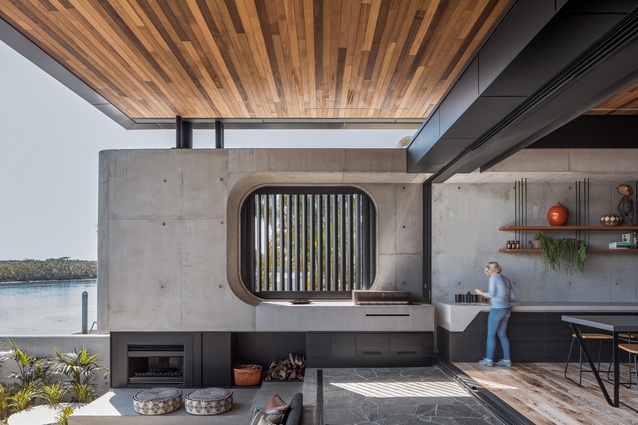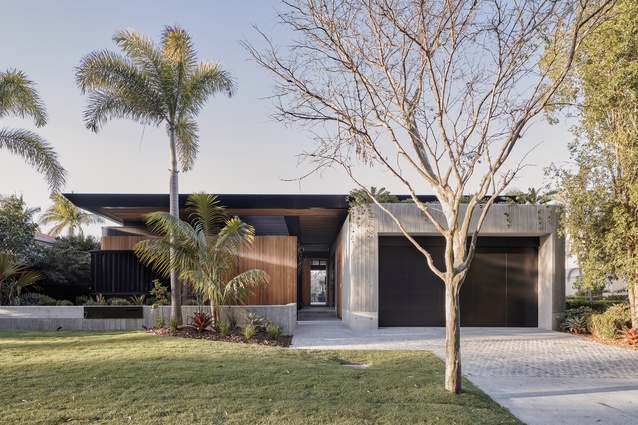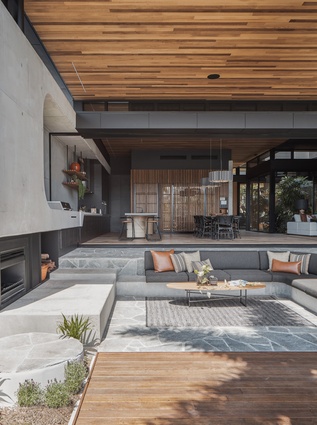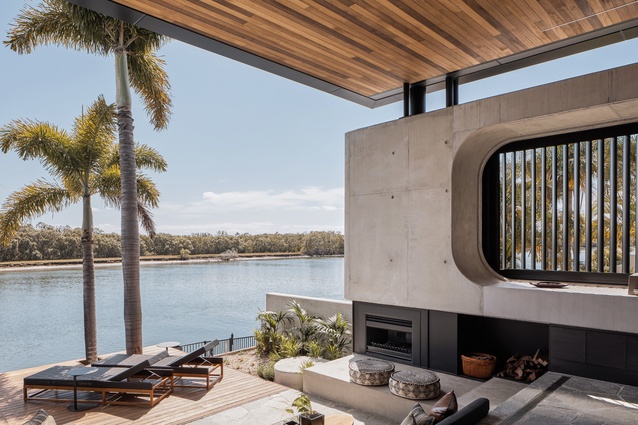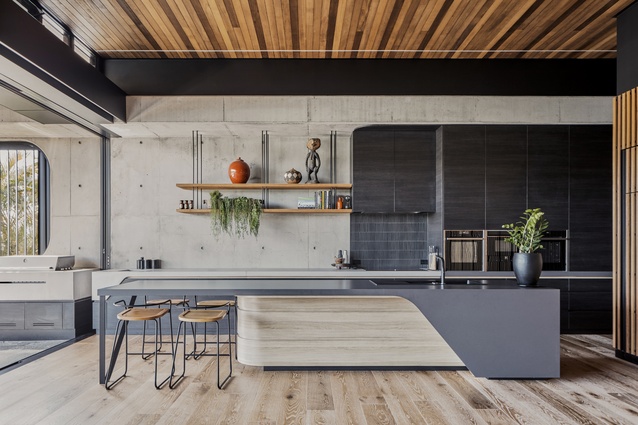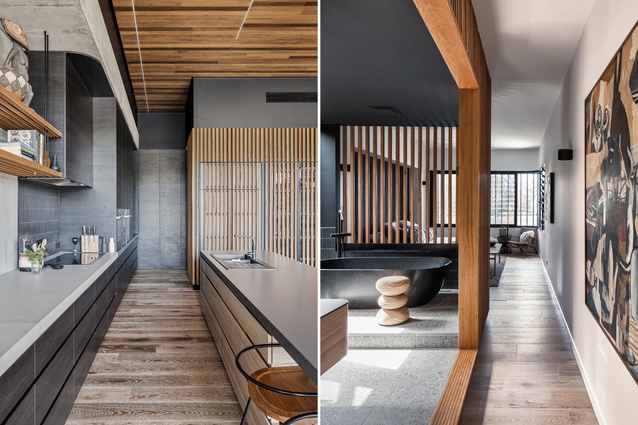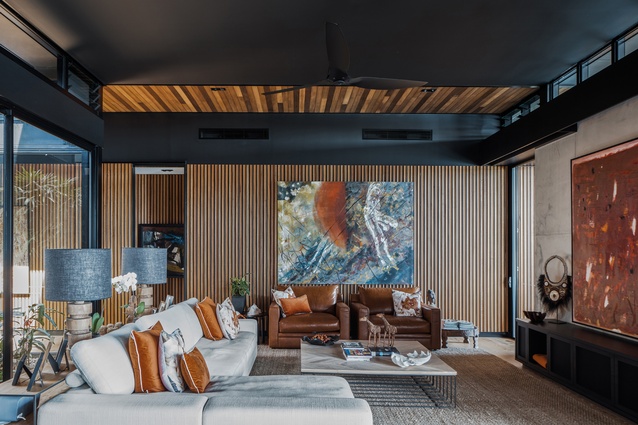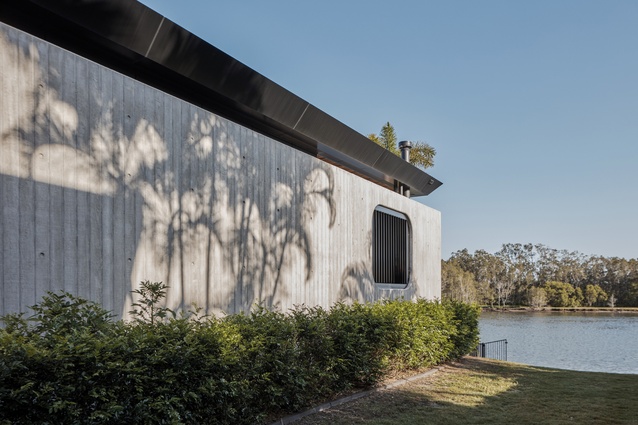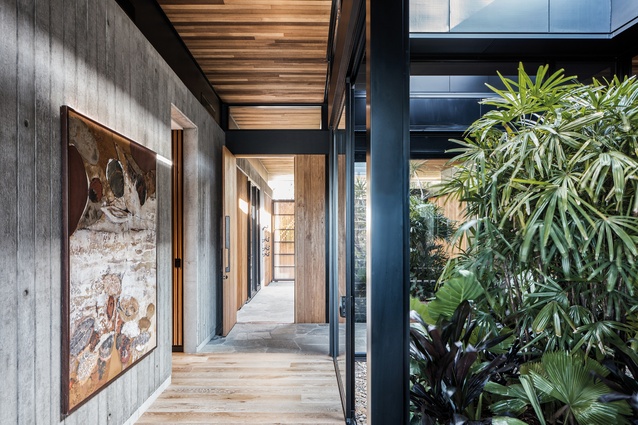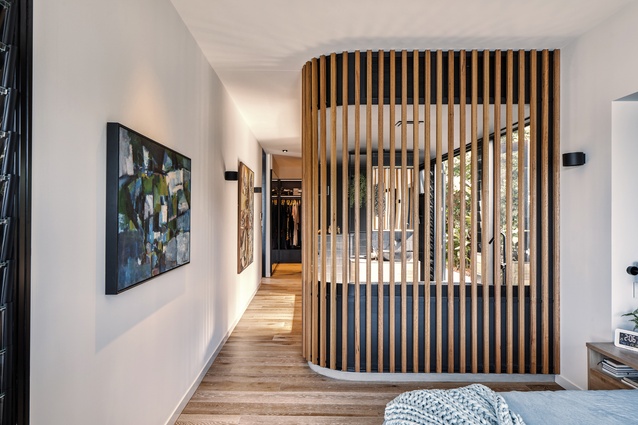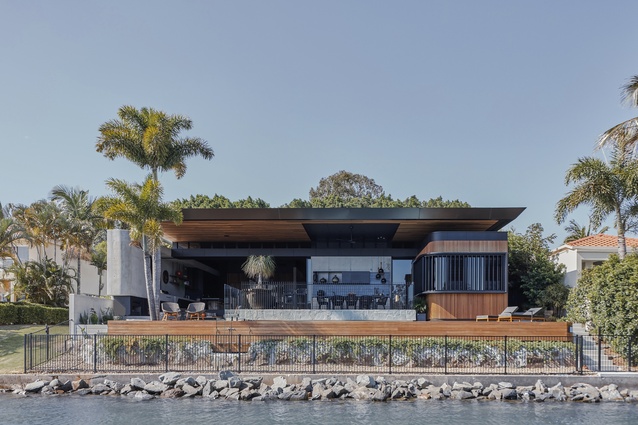Magic touch: Gold Coast residence
Concrete and timber join forces in this house to offer a visual and physical experience that is close to architectural magic.
Timber and concrete possess a certain architectural magic. As natural materials, their textures provide expression and variety in architecture, giving life to form and space and creating a sensorial environment. Timber has a sense of warmth and comfort; concrete imparts solidity and strength. At Cove House, Justin Humphrey Architect (JHA) uses timber and concrete to differentiate forms, generate pattern and rhythm, and influence the ambience of spaces, taking advantage of their tactile qualities to create a house that feels as good as it looks.
Cove House in Sanctuary Cove – a residential development on the waterways north of the Gold Coast – is home to a couple that enjoys travel, art and design. The pair developed an interest in subtropical architecture from regular trips to South-east Asia and engaged JHA to design a robust house that would provide year-round comfort throughout South East Queensland’s warm, humid summers and mild, dry winters.
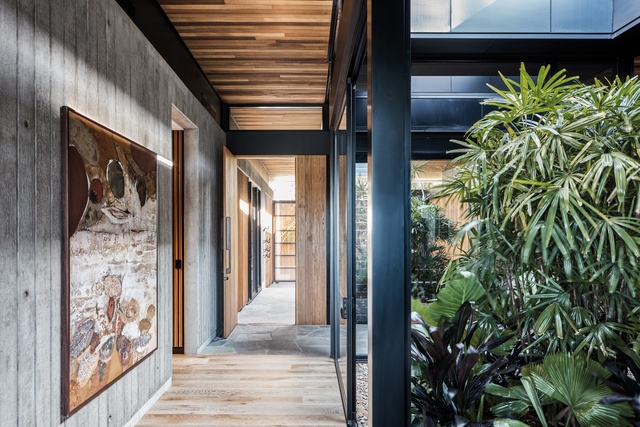
“The house applies subtropical ideals to this climate, showcases honest materials that develop patinas over time, and folds the garden into the house to break down the formal boundary between inside and out,” Humphrey explains. The clients also had a complete collection of artworks by Australian abstract painter Frank Hodgkinson that needed to be accommodated. Like Cove House, they are highly textured and earthy in colour, working beautifully with the natural palette of the house.
Design and planning in Sanctuary Cove are regulated by development-control by-laws, which, in this case, mandated that the house be single storey, be built to the easement boundary and utilise fire-rated materials for this shared wall.
Cove House has three visible façades – street, easement and water. JHA viewed the easement façade as an opportunity to communicate the tactile nature of the house, using board-form concrete to create a wall with texture, grain and an almost-monolithic presence.
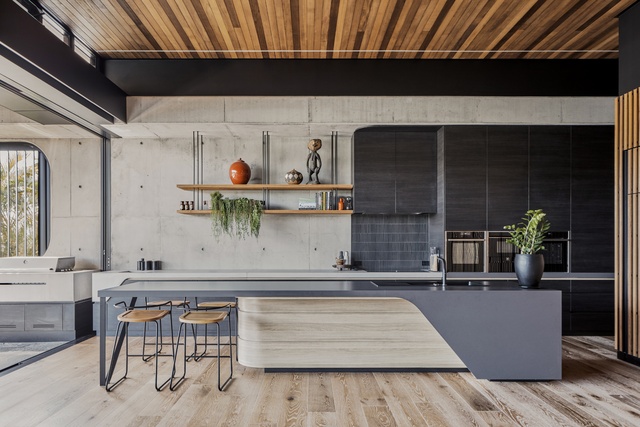
From the street, the house is a composition of concrete and timber forms beneath a floating roof plane. Curved corners reduce the visual scale of the building and bring out the refined and rhythmic qualities of the honey-coloured timber battens and timber-grain concrete, helping bed the single-storeyed house into its suburban landscape.
The entrance to the house challenges the sense of what is inside and what is out. “Once inside the entry gate, you find yourself in an external garden room and, while you haven’t reached the formal front door, you still feel as though you are now inside the house,” says Humphrey.
Crazy paving snakes around a hardy, verdant garden, and there is access to two guest bedrooms that are separate from the main house. This provides privacy and separation, and the rooms can be closed up when not in use.
The paving extends inside the formal entrance of the main house where a glass-enclosed garden brings the landscape indoors. The open kitchen, and dining and living area extend across most of the width of the house, with the master suite stretching along the western boundary.
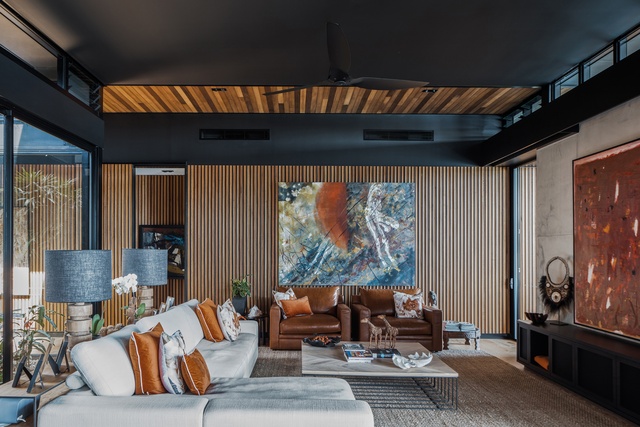
A butler’s pantry is concealed in a timber-clad box, and the kitchen bench appears to be carved out from the concrete wall. The interior flows outside, stepping down to a sunken lounge with an outdoor fireplace and a deck facing north to the river.
“Some people might think of single storey as being restrictive, but it gives you the opportunity to focus on the singular ground plane and manipulate it with raised and sunken areas to influence the qualities of spaces,” says Humphrey. “When you walk into a space, it can encourage or suggest different things – whether to walk through quickly, or slowly, to look at the view or to reflect and take a moment.”
Materials are similarly used to influence the experience of spaces. Concrete dominates on one side of Cove House, providing a solid and sculpted backdrop to the more-public spaces of kitchen, dining, lounge and outdoors, as well as the garage and laundry.
Timber is prevalent on the other side of the house where it provides a warm, textured enclosure for more-private spaces, with the master bedroom and en suite having light and dark palettes respectively, to create open or intimate settings.
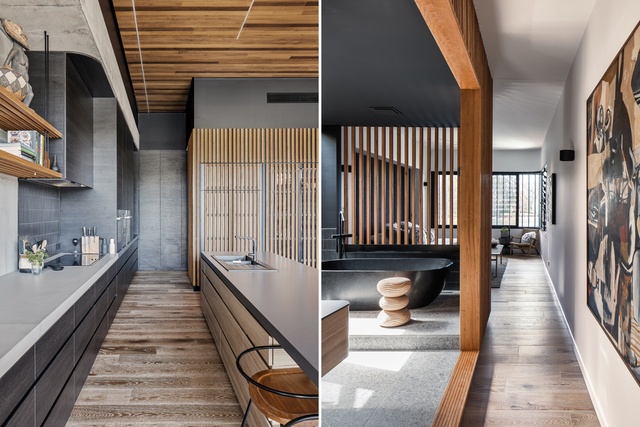
The master en suite is designed as a retreat, opening to a protected side garden, and surrounded by a timber-batten screen that maintains its connection to the bedroom and views to the river. Elevating the bath-tub on a raised floor promotes a sense of ritual about bathing and the dark ceiling creates a more-enclosed feeling of space.
Designed for the subtropical climate, Cove House stays comfortable in summer without air conditioning. Deep overhangs provide shade and obstruct the sun while openings in and above the boundary wall channel north-east breezes through outdoor areas. Glazing and ventilation draw south-easterlies into the house through the internal gardens.
Through this thermal comfort and the use of natural materials, Cove House feels good. It has a visual and physical tactility that offers a rich, sensorial experience and ignites that architectural magic.
This article first appeared in Urbis magazine.


